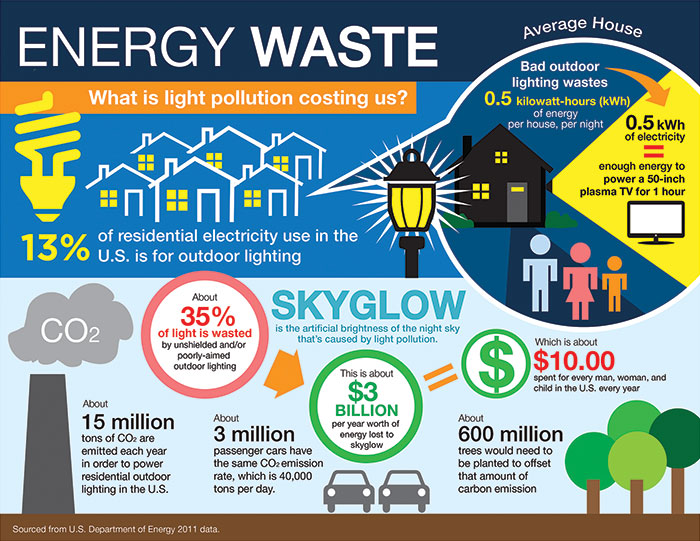Light Pollution Wastes Energy and Money
In an average year in the U.S. alone, outdoor lighting uses about 120 terawatt-hours of energy, mostly to illuminate streets and parking lots. That’s enough energy to meet New York City’s total electricity needs for two years!
IDA estimates that least 30 percent of all outdoor lighting in the U.S. alone is wasted, mostly by lights that aren’t shielded. That adds up to $3.3 billion and the release of 21 million tons of carbon dioxide per year! To offset all that carbon dioxide, we’d have to plant 875 million trees annually.
Environmental responsibility requires energy efficiency and conservation
- Installing quality outdoor lighting could cut energy use by 60–70 percent, save billions of dollars and cut carbon emissions.
- Outdoor lighting should be fully shielded and direct light down where it is needed, not into the sky.
- Fully shielded fixtures can provide the same level of illumination on the ground as unshielded ones, but with less energy and cost.
- Unnecessary indoor lighting – particularly in empty office buildings at night – should be turned off.
New lighting technologies can help conserve energy
- LEDs and compact fluorescents (CFLs) can help reduce energy use and protect the environment, but only warm-white bulbs should be used.
- Dimmers, motion sensors and timers can help to reduce average illumination levels and save even more energy.
Quality lighting design reduces energy use and therefore energy dependence. It also reduces carbon emissions, saves money and allows us to enjoy the night sky. Watch a clip of the documentary The City Dark to learn how lighting design can reduce light pollution and also conserve energy.
Source: International Dark Sky Association / Energy Waste Article
Posted: August 19, 2015


